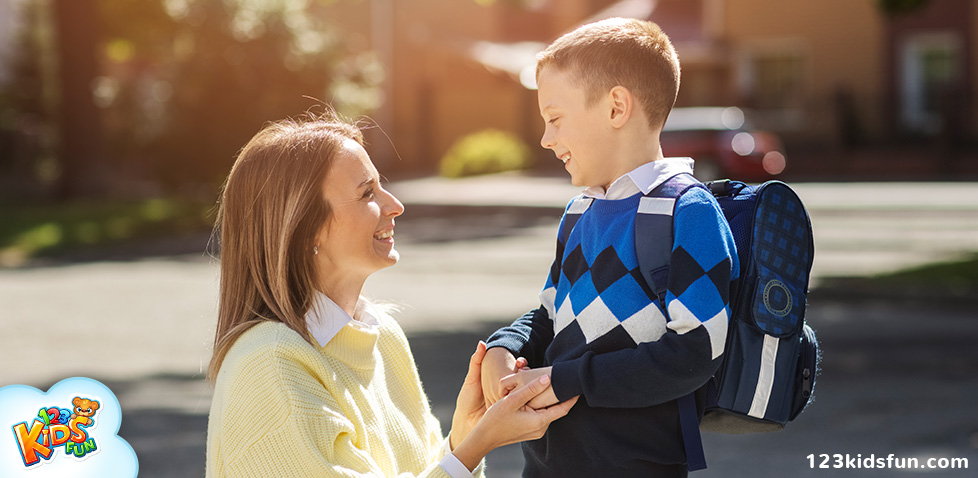
Back to School Emotions: From Joy to Jitters
The beginning of the school year is exciting. However, it can also feel overwhelming. Some children can’t wait to see their friends and teachers. Others, in contrast, experience back-to-school anxiety, shyness, or fear of being left out. For kids starting preschool, kindergarten, or entering a new school, this transition may feel like stepping into an entirely new world.
As parents, caregivers, and educators, we play a powerful role in how children handle these changes. With preparation, empathy, and encouragement, we can help them feel confident, included, and ready to grow.
Why the Start of School Can Be Difficult – Back to School
Psychologists point out that transitions—like starting a new grade or moving to a different school—are among the most stressful events for children. After a summer of familiar routines, the return to structure, new faces, and academic expectations can feel like a big leap.
For example, children may worry about:
- • Not knowing anyone in class
- • Being judged for how they look, dress, or behave
- • Feeling behind academically
- • Being separated from parents
- • Facing unkindness or bullying
These worries are real and valid. Therefore, acknowledging them is the first step toward helping children feel secure.
How Parents Can Prepare Children for a Smooth Transition – Back to School
1. Talk About Feelings Openly
Encourage your child to name their emotions: “I feel nervous,” “I feel excited,” or “I feel scared.” Labeling emotions helps children process them. You can say: “It’s normal to feel nervous on the first day. Many kids feel the same way.”
2. Visit the School in Advance
If possible, walk through the building, find the classroom, and meet the teacher before the first day. Familiarity lowers anxiety.
3. Practice the Morning Routine
A predictable schedule—waking up, getting dressed, packing lunch—gives children a sense of control. Start practicing a week before school begins.
4. Role-Play Social Situations
Pretend play can prepare children for meeting new classmates. Practice introducing themselves, asking to join a game, or saying hello to someone standing alone.
5. Model Empathy and Kindness
Share your own childhood stories about times you felt nervous or left out. Show that kindness, even a smile or greeting, can make a huge difference.
6. Encourage Problem-Solving
If your child worries about being teased, discuss strategies: walking away, speaking up, or telling a teacher. Reinforce that bullying is never their fault.
Teaching Children About Judgment and Inclusion
We all know how easy it is to judge someone before we really know them. Help your child pause and reflect: “How would you feel if someone judged you before they knew who you are?” Encourage them to give others a chance.
Remind children:
- • Everyone has a story we don’t see.
- • Kindness costs nothing but means everything.
- • True confidence comes from lifting others up, not putting them down.
When it comes to bullying, emphasize that the problem lies with the person who bullies, not the child who is targeted. This perspective protects children’s self-esteem and helps them understand that cruelty is not a reflection of their value.
Helpful Books for Parents and Children
Supporting children emotionally during school transitions becomes easier when we have the right tools. These books are highly recommended by psychologists and educators:
📚 For Parents:
- • “The Whole-Brain Child” by Daniel J. Siegel & Tina Payne Bryson – practical strategies for building resilience and emotional regulation.
- • “How to Talk So Kids Will Listen & Listen So Kids Will Talk” by Adele Faber & Elaine Mazlish – timeless advice for improving communication.
- • “UnSelfie: Why Empathetic Kids Succeed in Our All-About-Me World” by Michele Borba – why empathy is the key to raising strong, kind children.
📚 For Children:
- • “The Invisible Boy” by Trudy Ludwig – a heartwarming picture book about kindness and inclusion
- • “The Day You Begin” by Jacqueline Woodson – for children who feel different or unsure about fitting in.
- • “Have You Filled a Bucket Today?” by Carol McCloud – a simple way to teach children about everyday kindness.
Final Thoughts – Back to School
The first days of school are about more than pencils and backpacks—they’re about belonging, empathy, and emotional growth. By preparing our children, talking about their feelings, and encouraging acts of kindness, we give them the tools to thrive.
🌟 Remember: A single smile, a kind word, or a small gesture can change someone’s day—and sometimes, even their life.
123 Kids Fun Team – parents, educators, and creators of playful learning tools. We’re fascinated by psychology and neurodidactics, and we love helping kids grow with confidence.








